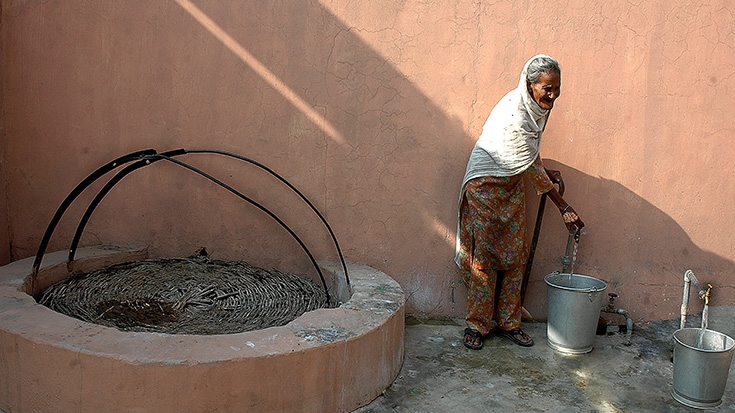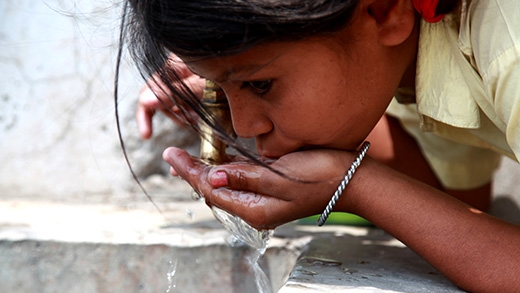Demand for more modern lifestyles
A number of rivers flow through the green and fertile farmlands of Punjab, yet many villages face acute shortages of drinking water. Demand for water in the state is soaring for two primary reasons: a growing population and people adopting more modern, water-intensive lifestyles. Many families have relatives abroad and are familiar with the better lifestyles they enjoy.
As rising demand constrains water supply, the Punjab government has made concerted efforts to provide rural households with safe, treated water within their homes.
Punjab leads the way
In 2006, when the project first started, most villages received only intermittent water supply, and almost a fifth had no water supply system at all.
Today, Punjab leads the way among India’s states in bringing safe water to its rural people. Over a million households now receive safe water supply, and more than 40 villages have round-the-clock water supply. In fact, more rural households in Punjab have piped water connections than in any other part of the country.
Most village homes receive over 40 litres of water per capita per day (lpcd) - an amount generally sufficient for household use. Over time, the state plans to increase that amount to 70 lpcd or more.
Given the absence of NGOs in Punjab, government engineers worked closely with residents to implement the program. The engineers credit the program’ssuccess to Punjab’s forward-looking rural communities, and particularly their strong interest in improving their water supply.
Balbir Singh, an eighty-one year old retired army man, even came forward to lend money to poor families who were unable to pay their share. "Nothing new is easy,” Singh said, “but I knew the water supply system was for our good and I took it upon myself to make it a reality."
Addressing the chemical contamination of groundwater
The next critical challenge for the state will be solving the issue of chemically contaminated groundwater and ensuring the sustainability of water sources.
In Punjab, as elsewhere in India, groundwater remains the most common source of water for both farms and households, and water tables are falling. Alarmingly, the groundwater is frequently contaminated with arsenic and fluoride and, in six districts, with heavy metals such as uranium.
Recently, a study commissioned by Punjab’s school of public health revealedthat in some areas Punjab’s groundwater is highly polluted with untreated or partially treated sewage, effluents, and run-off from farms, industries and hospitals.. Furthermore, some health issues have been attributed to the poor water quality, includinghigher average abortion rates among women living in areas where water pollution levels are high.
In the most afflicted areas, public-private models are helping filter out harmful substances through a process known as reverse osmosis, and every district is being equipped with a water-testing laboratory.
In addition, a state-of-the-art laboratory is being set-up at Mohali near the state capital of Chandigarh, to test for harmful substances. Moreover, the Bhabha Atomic Research Centre (BARC) from Mumbai is actively involved in tackling the issue of uranium contamination.
Exploring surface water sources
The state government has started to map Punjab’s extensive water resources and plans to study the feasibility of sourcing drinking water from tapping surface water sources.. Unlike groundwater, flowing water sources are largely free from chemical contamination.
Going forward, Punjab’s rural water sector plans to “improve sanitation, place more communities in charge of their water supply schemes, ensure adequate volumes of water to rural households, and address the critical issue of water quality,” according to Srinivas Rao Podipireddy, World Bank project team leader.


